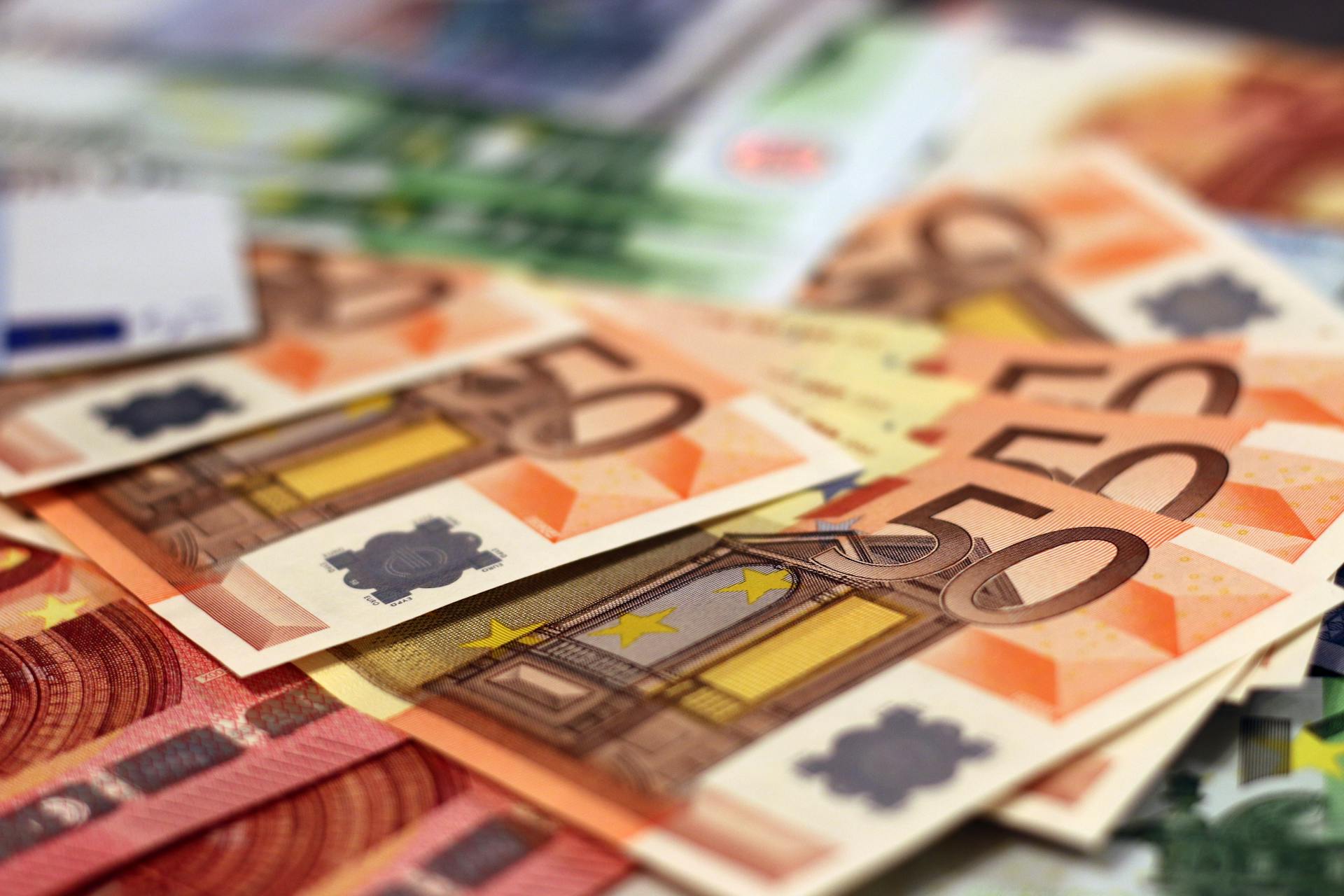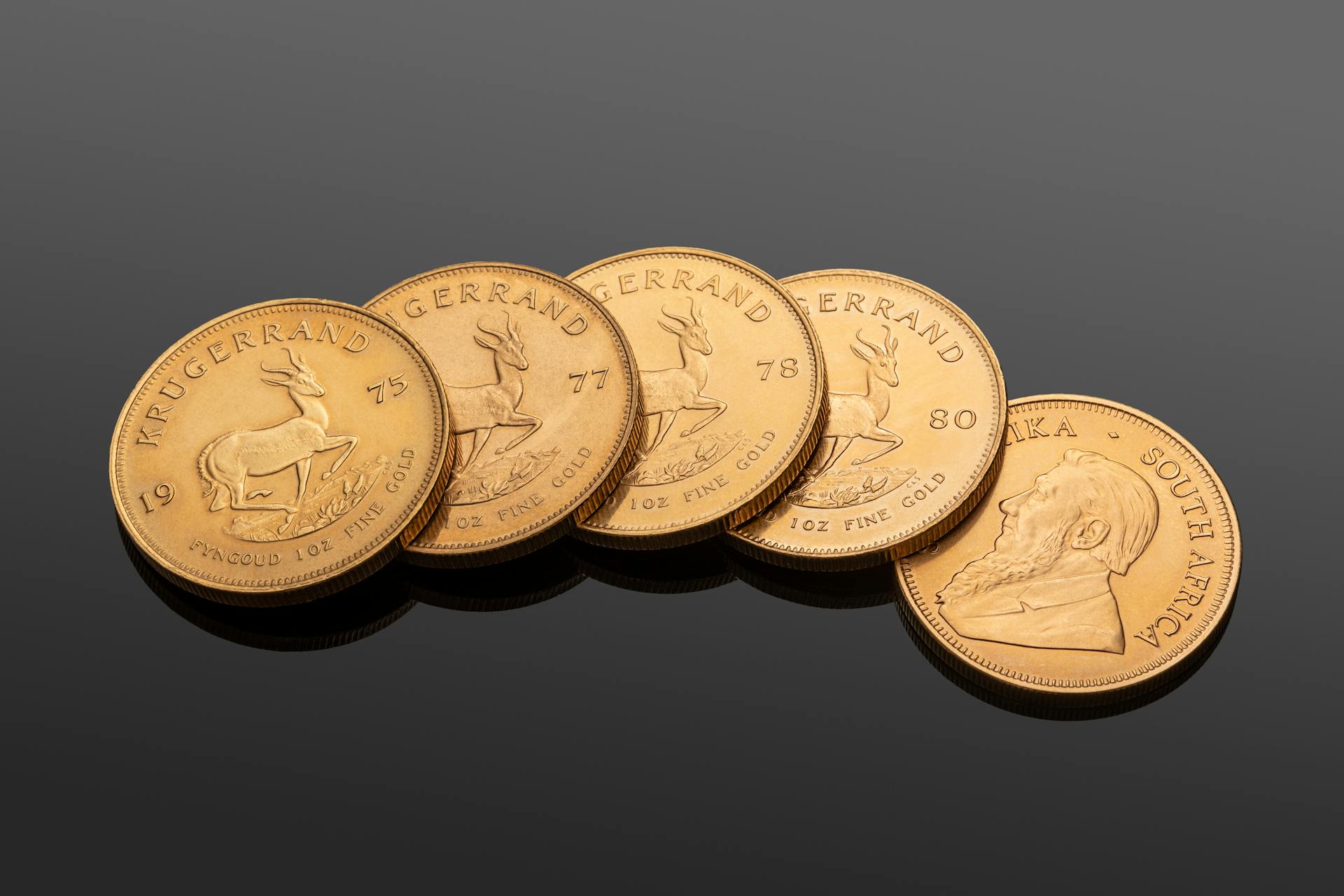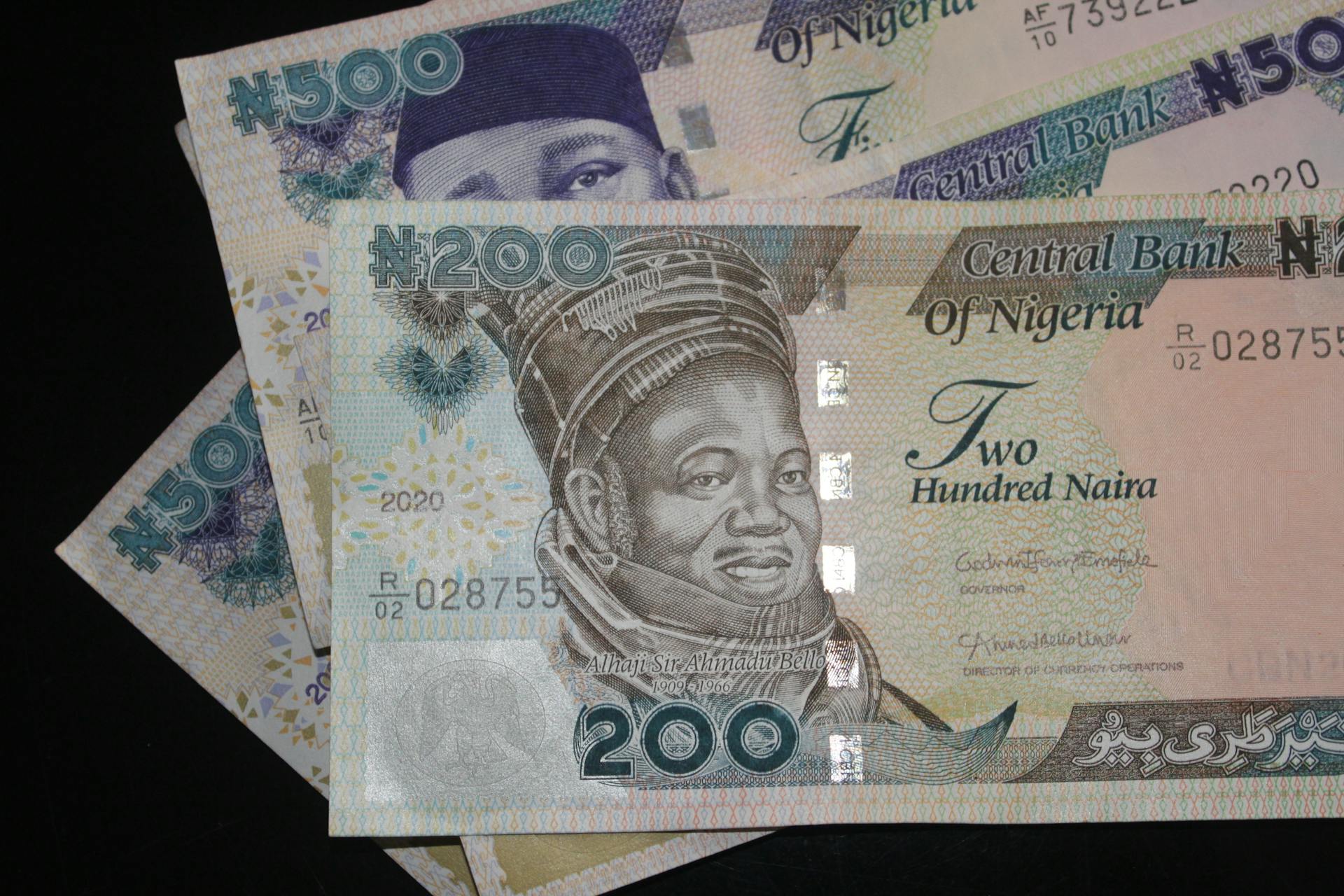
The Sudanese Pound is the official currency of Sudan, and it's used for all transactions within the country. It's denoted by the symbol SDG.
The Sudanese Pound is subdivided into 100 qirush, but these smaller units are rarely used in everyday transactions. In fact, they're mostly used for accounting and financial purposes.
The value of the Sudanese Pound can fluctuate depending on various economic factors, such as inflation and exchange rates. This can be a challenge for tourists and expats who need to exchange their money for local currency.
As of the latest exchange rates, the Sudanese Pound is valued at around 450 SDG to 1 USD, although this can vary depending on the current market conditions.
Curious to learn more? Check out: 1 Usd to Sudanese Pound
What Is the Sudanese Pound?
The Sudanese pound is a currency that was introduced in 1956, replacing the Egyptian pound at par. It was the first distinct Sudanese currency.
The Sudanese pound was divided into 100 piastres, with each piastre further subdivided into 10 millims. This was a result of the legacy of the Egyptian currency reform.
The pound was pegged to the U.S. dollar at a rate of US$2.87156 per LS 1 from 1958 to 1978. This pegging had a significant impact on the value of the pound.
During this time, the pound underwent several devaluations, which affected its value.
A fresh viewpoint: Sudanese Dinar
Banknotes and Currency

The Sudanese pound has a long history, with the first Sudanese pound introduced in 1956, replacing the Egyptian pound at par. This currency was used until 1992, when it was replaced by the Sudanese dinar at a rate of 1:10.
The first Sudanese pound was used in both Northern and Southern Sudan, but it was eventually divided into two separate currencies in 1992 due to the Second Sudanese Civil War. The 2nd Sudanese pound was introduced in 2007, replacing the Sudanese dinar at a rate of 1:100.
Here's a brief overview of the banknotes used in Sudan:
Banknotes
The Sudanese currency has had its fair share of changes over the years. In April 1957, the Sudan Currency Board introduced notes for 25 PT, 50 PT, LS 1, LS 5, and LS 10.
The production of banknotes was later taken over by the Bank of Sudan in 1961. LS 20 notes were introduced in 1981, followed by denominations of LS 50 in 1984 and LS 100 in 1988.
A unique perspective: Zimbabwean Bond Notes

A significant change occurred in 1992 when the Sudanese dinar replaced the first Sudanese pound at a rate of 1:10. This marked a new era for the Sudanese currency.
Here's a list of some of the key banknotes introduced in Sudan:
In recent times, the Central Bank of Sudan has introduced new banknotes to address the country's economic crisis. In 2019, new banknotes of LS 100, LS 200, and LS 500 were released.
A unique perspective: Banknotes of the Australian Pound
Questionable New Notes
In 2005, the National Public Radio of the United States reported that forces in southern Sudan were printing pound notes bearing the name "Bank of New Sudan", but there is no such bank.
The legitimacy of these notes is questionable due to duplicate serial numbers.
The second Sudanese pound was introduced on January 10, 2007, replacing the Sudanese dinar at a rate of 1:100.
You might like: Hong Kong Dollar Notes
Second
The second Sudanese pound, also known as the SDG, was introduced on 9 or 10 January 2007, marking a significant change in the country's currency.

It replaced the dinar at a rate of LS 1 = SD 100 (or 1 SDG = 1,000 SDP), which is a substantial conversion.
The second pound was part of the Comprehensive Peace Agreement between the government of the Republic of the Sudan and the Sudan People's Liberation Movement, aimed at promoting peace and stability in the region.
As a result, the Central Bank of Sudan (CBOS) adopted a program to issue a new currency, reflecting the cultural diversity of Sudan.
The second pound became the only legal tender as of July 1, 2007, and was recognized as a symbol of the country's progress towards peace and economic stability.
Recommended read: How Much Is a 1921 Peace Silver Dollar Worth
Conversion and Exchange
Converting the Sudanese Pound to US Dollar is a straightforward process. You can see the exchange rates for various amounts of SDG in the table below.
Converting US Dollar to Sudanese Pound is a bit more complex, but the exchange rates are clearly listed in the table below.
Convert to USD

Converting to USD can be a straightforward process, especially with the right conversion rates. The Sudanese Pound (SDG) can be exchanged for the US Dollar (USD) at various rates.
You can exchange as little as 5 SDG for $0.0083 USD. This is a great option for small transactions or purchases.
Exchanging larger amounts can be more cost-effective. For example, 10 SDG is equivalent to $0.017 USD, which is twice the value of exchanging 5 SDG.
If you need to exchange a larger sum, you can exchange 100 SDG for $0.166 USD. This rate is also useful for converting larger amounts of money.
Here's a table summarizing the conversion rates:
Converting large amounts, such as 50,000 SDG, can result in a higher USD value of $83.19.
USD Converter
The value of the Sudanese Pound (SDG) against foreign currencies continues to deteriorate rapidly, making it a challenging time for conversion and exchange.
If you're looking to convert US Dollars (USD) to Sudanese Pounds (SDG), you'll need to know the current exchange rate. According to the provided exchange rate table, 5 USD is equivalent to SDG3,005.00.
See what others are reading: 50 Sudanese Pound to Usd

The exchange rate can vary depending on the market, with the parallel market rate reaching SDG2,100 in July, a 13 percent loss in value since early June. This is a significant drop from the official exchange rate of SDG1,854.
To give you a better idea of the current exchange rates, here's a table showing the conversion of various USD amounts to SDG:
Keep in mind that these exchange rates are subject to change and may not reflect the current market rate.
Economic Impact
The Sudanese pound has a significant economic impact on the country. Its value has been fluctuating over the years, with a 40% devaluation in 2018 affecting inflation and the cost of living.
This devaluation led to a rise in prices, with a 25% increase in food prices and a 15% increase in transportation costs. The Sudanese people had to adjust their spending habits accordingly.
The economic instability has also led to a decrease in foreign investment, with a 30% drop in foreign direct investment between 2017 and 2018.
A unique perspective: Turkish Economic Crisis (2018–current)
Current Status

The Sudanese pound has been through some significant changes in recent years.
The current Sudanese pound was established in 2011, following the secession of South Sudan from the Republic of Sudan.
In 2021, the Sudanese pound was devalued, with the official exchange rate set to LS 375.08 per US dollar.
This move closed the gap between the commercial and black market exchange rates, which had been a major issue.
As of July 2024, the Sudanese pound had depreciated to LS 2100 per US dollar in the parallel market.
On a similar theme: Egypt Pound Black Market
History
The Sudanese pound has a fascinating history that spans several decades. In 1957, the government began circulating the Sudanese pound, marking the beginning of a new era for the country's currency.
From 1958 to 1978, the currency was pegged to the U.S. dollar, providing a stable exchange rate for international trade and commerce. This stability was crucial for the country's economic growth during that period.

The first Sudanese pound was replaced by the dinar in 1992, and then the dinar itself was eliminated in 1999. This significant change was followed by a brief period without a national currency.
The modern Sudanese pound was reinstated as official legal tender on July 1, 2007, after a peace agreement between the government and the Sudan People's Liberation Movement. This marked a new beginning for the Sudanese economy.
The second iteration of the Sudanese pound replaced the dinar at a rate of one pound to 100 dinars, making it easier for citizens to transition to the new currency.
Here's a brief timeline of the Sudanese pound's history:
- 1957: The Sudanese pound is introduced.
- 1958-1978: The currency is pegged to the U.S. dollar.
- 1992: The dinar replaces the first Sudanese pound.
- 1999: The dinar is eliminated.
- 2007: The modern Sudanese pound is reinstated.
Understanding the Impact
The economic impact of a crisis can be devastating, resulting in widespread job losses and business closures.
In the article, we saw that the tourism industry was hit particularly hard, with a 30% decline in bookings and a loss of $1 billion in revenue.
The ripple effect of this decline was felt throughout the economy, as small businesses that relied on tourism revenue struggled to stay afloat.
The article reported that 75% of small businesses in the affected area had to lay off staff or reduce their workforce.
The crisis also led to a significant increase in poverty rates, with 25% of the population now living below the poverty line.
The government responded by implementing stimulus packages and providing financial assistance to affected businesses and individuals.
As a result, some businesses were able to recover and even thrive, but many others were forced to close their doors permanently.
Featured Images: pexels.com


